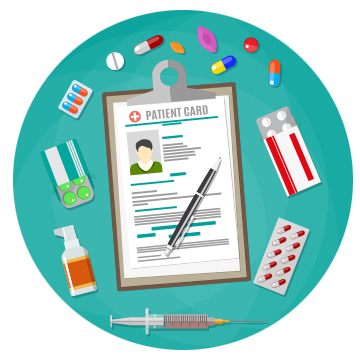Module 2: Basic Pharmacology of Controlled Drugs and Substances
Lesson 2
Cannabinoids – Pharmacodynamics/mechanism of action
Mammalian tissues contain at least two types of cannabinoid receptors: CB-1 and CB-2. CB-1 receptors are located at nerve terminals in the CNS and also in some peripheral tissues, including dorsal root ganglia, sympathetic ganglia, adrenal gland, heart, lung, reproductive tissues, urinary bladder, gastrointestinal tissues, and immune cells (Health Canada, 2013). CB-1 receptors are found on pain pathways in the brain and spinal cord and on terminals of peripheral nervous system where they mediate cannabinoid-induced analgesia and make them alternative agents for managing chronic cancer and non-cancer pain (Canadian Pharmacists Association, 2014).
Physical effects include impaired coordination and balance, rapid heartbeat, red eyes, dry mouth and throat. Usual doses impair motor skills, especially when used in combination with alcohol. Effects of smoking Cannabis are felt within a few minutes and last two to four hours, whereas effects from ingestion (e.g., eaten in baked goods or in tea form) appear more gradually and last longer, and the person may feel dull and sluggish for some time afterwards. Cannabis can also be inhaled as a vapor, which eliminates the toxins present in the smoked form.
Cannabis makes the individual feel calm, relaxed, talkative and sometimes drowsy. Concentration and short-term memory are markedly impaired, and sensory perception seems enhanced, colours are brighter, sounds are more distinct, and the sense of time and space is distorted. Appetite increases, especially for sweets. Some people withdraw, or experience fearfulness, anxiety, and depression. A few experience panic, terror or paranoia, particularly with larger doses. Some experience hallucinations with larger doses and symptoms worsen in persons with psychiatric disorders, particularly schizophrenia (Canadian Pharmacists Association, 2014).
References:
- Canadian Pharmacists Association. (2014). E-Therapeutics. Ottawa, ON: Author.
- Health Canada. (2013). Information for Health Care Professionals: Cannabis (marihuana, marijuana) and the cannabinoids. Retrieved from http://www.hc-sc.gc.ca/dhp-mps/alt_formats/pdf/marihuana/med/infoprof-eng.pdf
